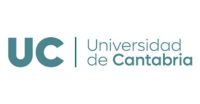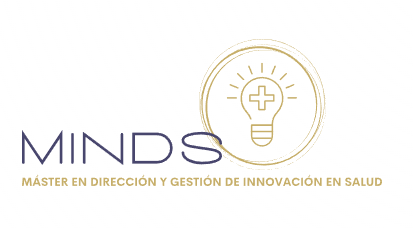The Photonics Engineering Group of the UC-IDIVAL and the CIBER-BBN has developed a sensor system that, located in a rigid endoscope, makes it intelligent, facilitating spatial orientation in endoscopic surgery. This allows more efficient and effective operations and to reduce the stress of the surgeon during their operations.
The work has been carried out by a team of the group led by Prof. José Miguel López Higuera to solve existing needs pre-specified by the surgeon Jaime Viera Artiles of the Otolaryngology Service of the Marqués de Valdecilla University Hospital.
The new device will not invade, at all, the surgical space and will facilitate the clinical execution of the operations by means of rigid endoscopes. The resulting new intelligent rigid endoscopes have been experimentally validated by surgeons at the Virtual Hospital of Valdecilla, showing fully satisfactory results.
 The SIBER / Seeing technological development has been developed by executing an agreement art.83 signed by the UC with the IDIVAL within the framework of the INNVAL18 / 2018 project whose principal investigator is the aforementioned doctor. The results have been industrially protected by requesting a utility model by the Cantabrian Health Service and the University of Cantabria, including the mentioned doctor and professor, as well as José Valdiande engineer working in the Group of Co-inventors Photonic Engineering.
The SIBER / Seeing technological development has been developed by executing an agreement art.83 signed by the UC with the IDIVAL within the framework of the INNVAL18 / 2018 project whose principal investigator is the aforementioned doctor. The results have been industrially protected by requesting a utility model by the Cantabrian Health Service and the University of Cantabria, including the mentioned doctor and professor, as well as José Valdiande engineer working in the Group of Co-inventors Photonic Engineering.
Minimally invasive endoscopic surgery has gained enormous importance and interest since it allows for less aggressive operations, with less collateral effects and substantially reduces hospitalization time, if necessary, and significantly reducing healthcare costs.
Through an endoscope, the inside of the human body is accessed through natural cavities or through small incisions (laparoscopy, arthroscopy, etc.) allowing the surgeon to observe the area under intervention. Standard rigid endoscopes are handled with one hand, while, with the other, the surgical instruments are manipulated, the spatial orientation being a difficulty that the surgeon must address through his own knowledge, which implies, among others, an extension of the interventions and added stress for the doctor.
 The sensor system developed provides, in real time, objective information of the field of work allowing to control the spatial position of the endoscope with respect to a reference position previously set by the surgeon, by simply stepping on a pedal.
The sensor system developed provides, in real time, objective information of the field of work allowing to control the spatial position of the endoscope with respect to a reference position previously set by the surgeon, by simply stepping on a pedal.
The system measures and represents on the screen image on which the surgeon visualizes the area of operation, the angular deviations of the endoscope with respect to the orientation set by the surgeon. The developed system offers the warping and pitching of the endoscope with respect to the reference set by the surgeon using a color bar system. The warping is represented by circular bars proportional in its arc length to the deflection calculated around the outer circumference of the image obtained from the endoscope. The pitch is represented by a vertical bar proportional in length to the deflection in degrees. Both warping and pitching are assigned thresholds using color codes. The information on the course of the operation may be duly recorded after the analysis considered relevant.
With the new development that converts a standard rigid endoscope into intelligent, the surgeon objectively improves his spatial perception of the anatomy, object of operation, significantly facilitating decision making without disturbing either his work or maneuverability field and, in addition, contributes to shorten the operation time and reduce your stress during it. Additionally, it will serve to train new surgeons more efficiently and effectively at the Virtual Hospital of Valdecilla.
Currently, within the framework of another project led by Prof. López-Higuera (reference INNVAL19 / 13), another system is being developed that will provide additional information on the surgeon's visual concentration in the field of operations during their operations.

 The SIBER / Seeing technological development has been developed by executing an agreement art.83 signed by the UC with the IDIVAL within the framework of the INNVAL18 / 2018 project whose principal investigator is the aforementioned doctor. The results have been industrially protected by requesting a utility model by the Cantabrian Health Service and the University of Cantabria, including the mentioned doctor and professor, as well as José Valdiande engineer working in the Group of Co-inventors Photonic Engineering.
The SIBER / Seeing technological development has been developed by executing an agreement art.83 signed by the UC with the IDIVAL within the framework of the INNVAL18 / 2018 project whose principal investigator is the aforementioned doctor. The results have been industrially protected by requesting a utility model by the Cantabrian Health Service and the University of Cantabria, including the mentioned doctor and professor, as well as José Valdiande engineer working in the Group of Co-inventors Photonic Engineering. The sensor system developed provides, in real time, objective information of the field of work allowing to control the spatial position of the endoscope with respect to a reference position previously set by the surgeon, by simply stepping on a pedal.
The sensor system developed provides, in real time, objective information of the field of work allowing to control the spatial position of the endoscope with respect to a reference position previously set by the surgeon, by simply stepping on a pedal.



















